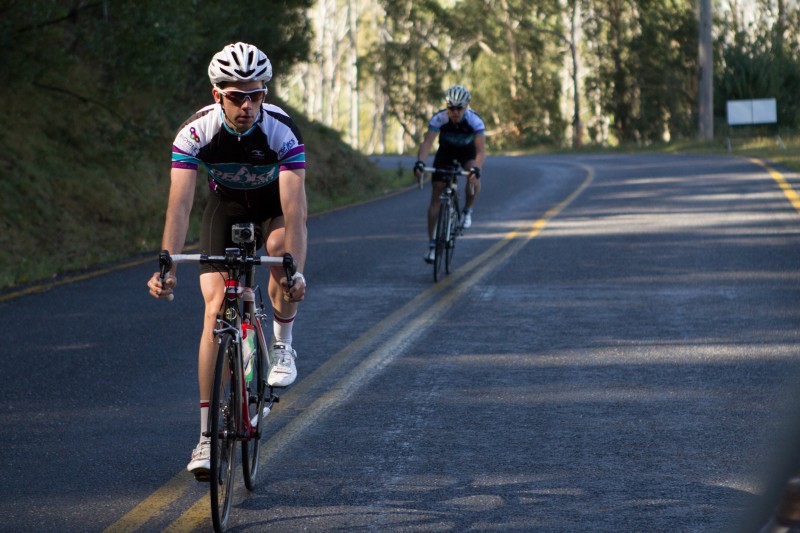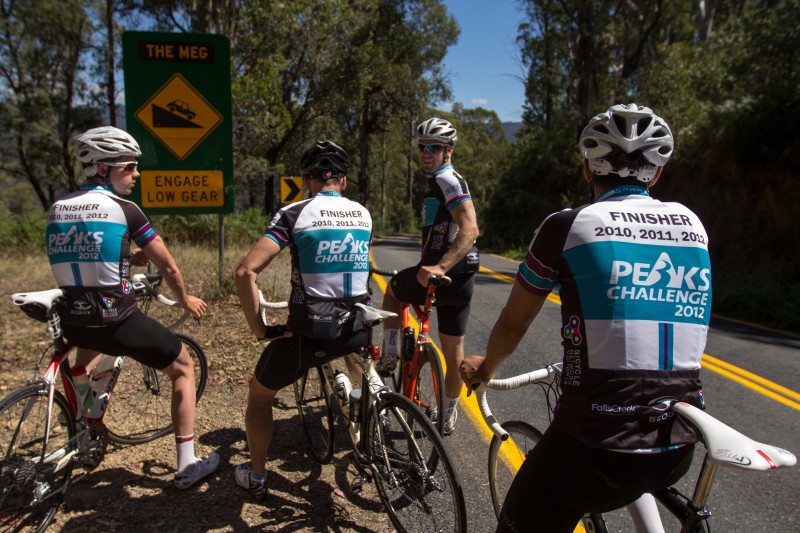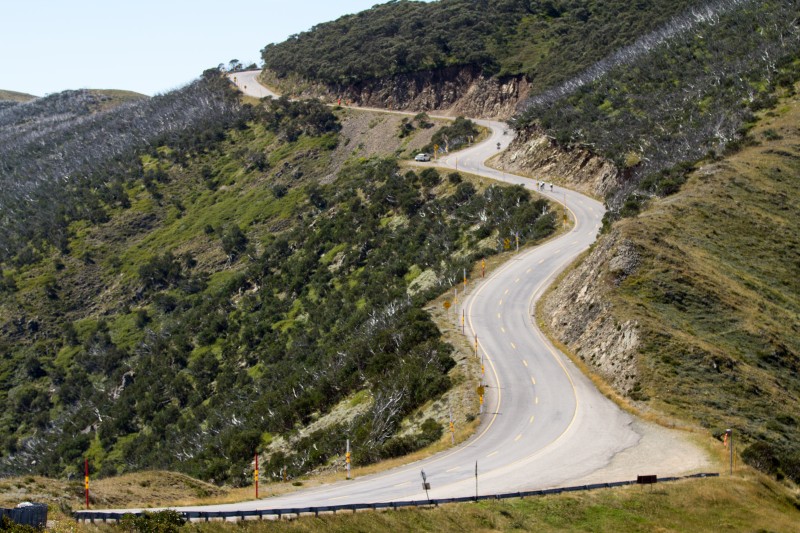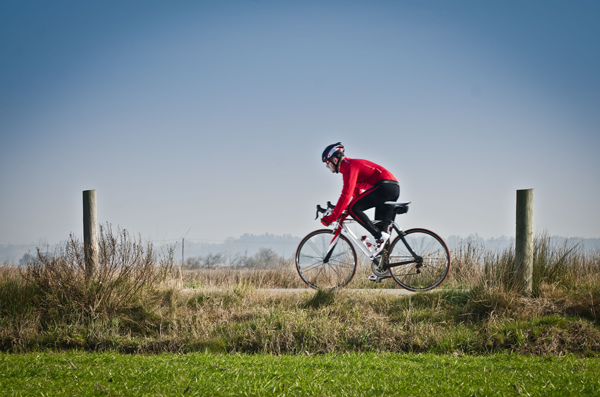Too busy to get as much time on the bike as you’d like? Don’t worry—Lee Rodgers explains that the secret to improving your performance is to train smarter, not longer.
“If only I had more time to train, I’d be so much quicker!”
It’s a common refrain of the time-constrained cyclist, bemoaning the lack of leisure time available to get out on the roads, or the trails, to enable them to jump up a level or three. Fact is, though, that the vast majority of cyclists don’t make enough of the time they have, and therefore there’s no reason to believe that if they had more, they’d actually use it to greater benefit.
I know a thing about training to the max with very few hours to do so. As a former Continental-level cyclist between the ages of 37 and 41, I was working somewhere in the region of 40 hours a week as editor of a cycling website and later as freelance journalist and cycling coach, whilst still racing competitively on the UCI Asia Tour circuit.
I raced the post-Tour de France crits in Europe for one season alongside the best in the sport, and completed the 2012 Tour of Qatar and Tour of Oman, prompting Philippe Gilbert to ride up to me on one stage and ask “Who are you?” A memory I cherish as much as actually finishing both those brutal races.
I won the Singapore National Champs three times, two time trials and one road race, and won the Green Jersey in the Tour de Taiwan against guys from SaxoBank and other top teams. I did all this with almost never having more than 10 to 15 hours a week to train, so I’m living proof that you can max out your potential with what most believe is just not enough time to train effectively.

So how do you use your time effectively? Firstly, before even getting on the bike, learn to embrace the time you do have, rather than fretting about the time you don’t. Cycling is, as I am sure we would all agree, in a large part a psychological game. Learning to minimize thoughts that affect your nerves and your sense of calm means more energy available for actually riding. In the same way, enforced time off the bike also needs to be accepted.
Remembering that cycling (and even racing) should be pursuits that bring a sense of contentment, let’s not forget that joy is crucial. I meet so many people who spend so much energy kinda pissed off with cycling or their condition that I wonder why they don’t just take up a sport they enjoy more. Being critical is essential to improving as a rider, but to continue this process mentally once you’ve finished the actual ride is nonsensical. Embrace the bike as a dynamic philosophy of living, the calm that it can bring and the positive effects it can have in all spheres of your life—this is advice I pass on to other pro riders too—and gains should come more easily.
To the actual training—one key element to my approach is to ask myself on every ride, “Is this helping me to achieve my goals and to become a better rider?”
If not—why are you doing it?
To answer this question effectively and to get the most from your training, I recommend sitting down and writing a list of your strengths and weaknesses. As humans, we tend naturally to focus on doing the things we enjoy. As cyclists we continue this trend, with climbers focusing on hills and flat men concentrating on barreling along valley roads.
But ask yourself—what kind of cyclist do I want to become?
Unless you’re just doing hill climbs all year, you’ll know that you need to work on all aspects of riding. The great riders, even the local legends, work on it all. Like a bodybuilder looking in the mirror and seeing weak calves who goes on to build sculpted legs, we have to work to turn our weak points into strengths.
Don’t be fooled into thinking that if you’re a rouleur and then start riding hills every day you’ll lose your flat power, because it doesn’t work that way. Your mind knows that a hill is a hill but your body—your engine—translates the hill into stress that places demand on muscle, tendons and the respiratory system. That stress needs to be dealt with and your goal is to build a machine which becomes as effective as it can be in dealing not only with the physical challenges but the manifestation of the stress.
You need not abandon your strengths, but rather start to incorporate more work, say two to three times a week, on your weaknesses and your strong points too will improve. These skills are transferable and you will find that your all-round power will be making gains.

Many cyclists with little time do not use their weekends effectively by going on too many group rides. Yes, cycling can be a great social pursuit, but is responding to everyone else’s surges and attacks what you need? Or would a more structured plan every other weekend be more beneficial? There’s a reason why Team Sky started skipping the races traditionally believed to be crucial in preparing for the Tour, and there’s a great deal of sense in training for your specific needs as opposed to being pulled apart by the whims and the strengths of others.
Get on the indoor trainer for an hour, a couple of occasions midweek, and use videos like those available from The Sufferfest for high velocity, low intensity workouts. There’s an array of prompts out there to make this demonic device more bearable, and the gains to be made from an indoor ride are massive. The time spent is economical, meaning you get more from it, and it affords an opportunity to work on pedal stroke and to eliminate unnecessary movements in the upper body, all of which cost you valuable energy. Work out your weaknesses and then use a video to target them.
Only have 30 minutes to ride? Then max it out for 20 mins with five minutes either side to cool down. Start doing mini time trials, which help you learn your limits and entice you to break through them. Get out to a short hill and ride it five times, with each effort harder than the previous, and you could be out and back within 40 minutes. Embrace steep sections or headwinds, and learn to love the roads you hate so that nothing scares you any longer.
Read up on Tabata sprints, a high-intensity intermittent exercise program. These evil little gems entail, say, a 30 second full sprint followed by 20 second rest, repeated until you can no longer max it out. These types of training programs offer great gains in not just sprinting, but also in ride and postride recovery and stamina over longer distances. In my opinion, if you classify any of your riding as ‘training’ rather than ‘leisure’, these should be included in every cyclist’s weekly schedule in the build up to an event or race.
Another thing to accept is the need for proper rest. Without it, your training could be futile and pointless. If you are looking to be more effective, which means harder in shorter bursts, then you must build active recovery and days off the bike into your plan.
So, forget about needing more time as there is no point fretting over what you don’t have. Get focused, get brutal and get better.
Easy!
Lee is a former professional on the UCI Asia Tour, and now blogs and coaches from crankpunk.com

Hill Workout #1 [60 min]
If you’re fortunate enough to have a hill nearby, you can get out and get this done in under an hour.
Choose a hill, preferably 1–2km in length. Start with a 10–20 minute warm up.
Step 1 Climb to the top, easy as you can at a perceived rate of exertion of five out of ten (PRE 5)
Step 2 First half, ride at a PRE 6; second half, full-gas and out of the saddle
Step 3 PRE 6 but three 10second attacks equal distance from each other
Step 4 Repeat Step 1
Step 5 Full-gas the whole way followed by a 10–15 minute easy ride home to cool down.
As you become stronger, you can start to extend this set, building to six climbs, then seven, aiming eventually to two full sets, or more. The goal of this workout is to recreate the pattern of ascents in a race but it will also help you better understand your own limits and capabilities.
Hill Workout #2 [60 min]
Very simple: choose a hill or portion or a hill, and go up it four or five times, with each ascent faster than the last. This is a short and sharp workout that will test your ability to gauge your efforts and build stamina and speed.
The 40 [40 min]
This is a very short but full intensity session that is best done indoors.
Start with a five minute warm up.
Step 1 Five minutes of over/unders at PRE 6.5 to PRE 7.5, alternating each minute. At the last crank it up for an extra thirty seconds with the last ten seconds at a full seated sprint.
Step 2 Three minutes easy.
Step 3 Repeat over/unders but at PRE 7 to PRE 8. Crank it up again for the last 30 seconds. Follow with two minutes easy then four minutes at a PRE 10—imagine you are soloing on the Champs Elysees!
Step 4 Three minutes: one minute PRE 7, one minute PRE 8, 40 seconds PRE 9, 20 seconds PRE 10. Do this twice, with a three minute rest between.
Step 5 Two minutes easy
Step 6 90second Tabatas: 20 seconds full gas seated sprints, 10 seconds recovery x3 followed by a cool down and you’re done!
Goal here is to hit all the high notes in a short space of time. The length of these intervals will test your short-term stamina and the Tabatas will supercharge you for the week. Think ‘Last 40 mins of a race’ for this workout. Do you wanna win? Well, do ya?!
Boonens [55 mins]
I love this one, and it can be done indoors or out.
Begin with a 10minute warm up.
Step 1 One minute at PRE 6, one minute at PRE 7, one minute at PRE 8, one minute at PRE 7, one minute at PRE 6 and the last 20 seconds at PRE 10
Step 2 After a two minute break, repeat Step 1
Step 3 Four minute break
Step 4 Repeat Boonens x3
Simple! From a speed of about 30km/h, your legs will be ready to surge you forward to as fast as you can hold, seated, a la Tom Boonen. Consciously hold the upper body as still as you can, feeling the flow in the legs and finding the best aero position. RPM should be Boonenesque. Hold this for four minutes, with a three minute break and repeat twice more. On the last Boonen, add another 15 seconds where you are taking on Mark Cavendish in a full-gas galloping sprint to win.
If you’re feeling monsterish, add three minutes of 20second Tabatas (step 6 in ‘The 40’) to workout above.
The aim of this workout is to improve power, strength and stamina in a short time and to work on form.
For inspiration watch: Ataque de Boonen video and Jan Bakelants wins the sprint
Ride On content is editorially independent, but is supported financially by members of Bicycle Network. If you enjoy our articles and want to support the future publication of high-quality content, please consider helping out by becoming a member.


Thank you for the pointers, I have started a similar training routine last year and at 65 feel adequate to do La Ruta de Los Conquestadores next month.
Thanks.
Michael
Thanks for the comment Michael, hope the Ruta went well!